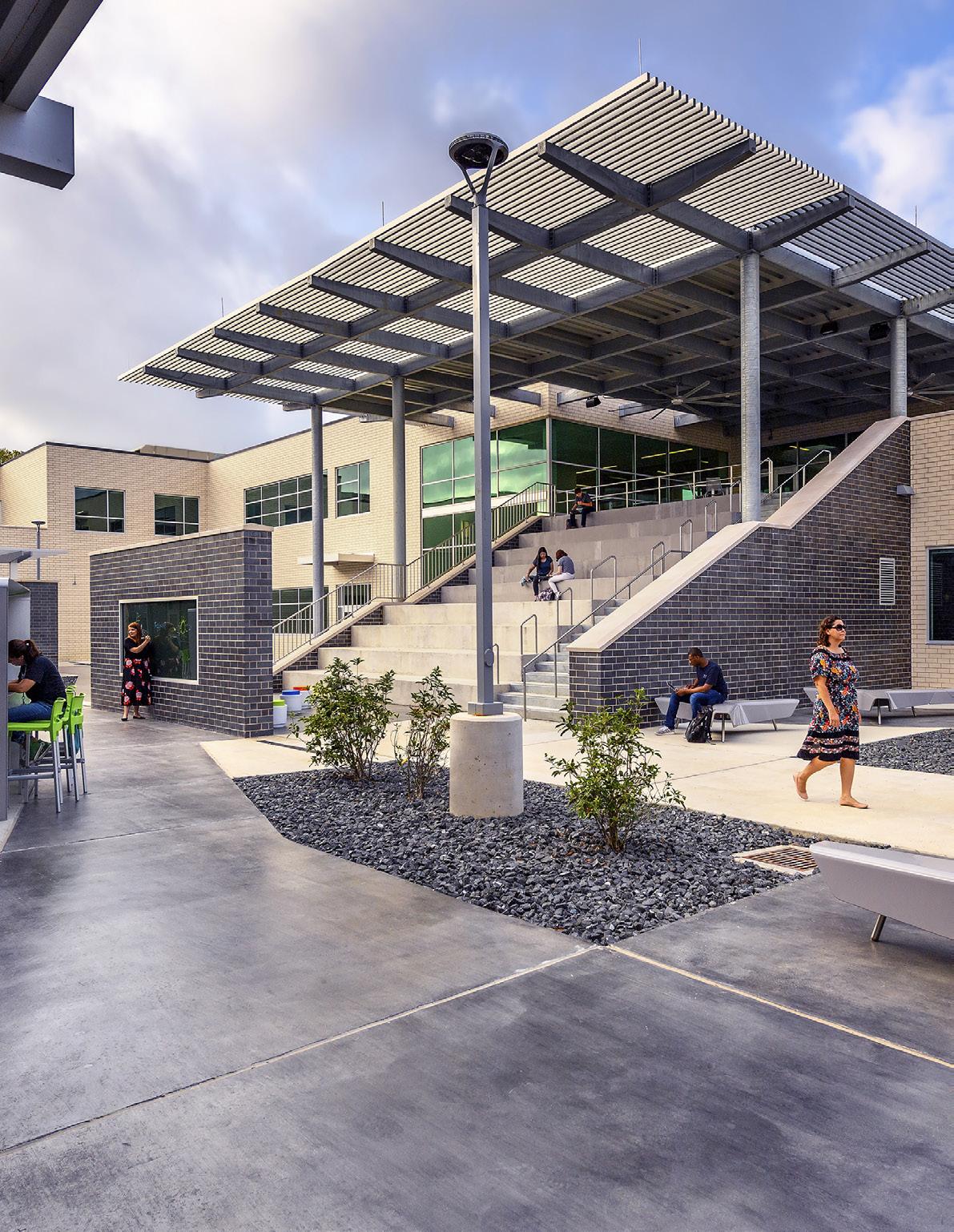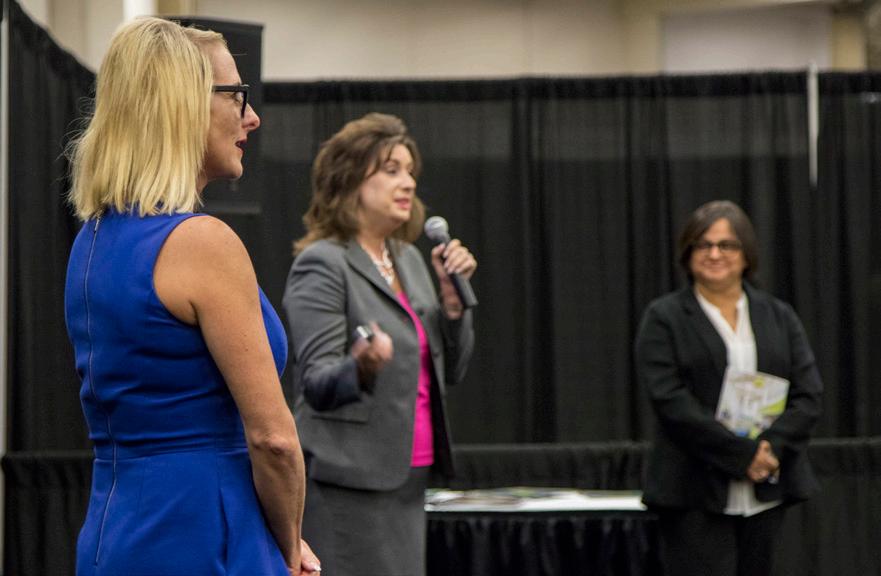
5 minute read
A Synopsis of Listening to High Schoolers
A SYNOPSIS OF LISTENING TO HIGH SCHOOL STUDENTS:
Dalane E. Bouillion, Ed.D. Yanira Oliveras-Ortiz, Ph.D. Lizzy Asbury, Ed.D.
Grounded in pragmatism, a team of educational researchers with approval from the Internal Review Board (IRB) at The University of Texas at Tyler, conducted a phenomenological, qualitative research study aimed at exploring the impact that purposefully designed learning spaces have on the high school students’ engagement in learning at Energy Institute High School. Phenomenological research provides the investigators with a fundamental understanding of the experiences and perspectives of individuals who have experienced the identified phenomenon (Creswell, 2014). The investigators designed semi-structured interviews to ensure an adequate level of flexibility during the focus groups (Creswell, 2014). By collecting the data through focus groups, high school students were encouraged to selfreflect and also elaborate on other students’ comments (Carter et al., 2014).
Two rounds of semi-structured focus group interviews were conducted. The first group was interviewed while the students were attending high school at one of the old buildings where the magnet school had been housed three years prior to the construction of the new campus. Students interviewed ranged from freshmen to juniors who planned on continuing to attend the high school once the new campus was built. In the first school year at the new building, two groups of sophomores, juniors, and seniors participated in the focus groups—all were enrolled at the high school housed in the old building and were then attending school at the new campus. Three separate focus groups were conducted to ensure dependability
and data source triangulation. Additionally, to ensure investigator triangulation, each investigator coded the data separately and met to debrief and compare the identified themes. Three coding methods were utilized to analyze the interview data: open, axial, and selective coding (Creswell, 2014). Open coding allowed the authors to identify broad categories of information (Creswell, 2014). Following open coding, axial coding facilitated the identification of themes within the conceptual framework of the study, and selective coding was used to explain the relationship and interconnectedness of the themes (Creswell, 2014).
Given that the findings are the results of focus group interviews, the investigators were cognizant of the limitations of focus groups and the influence members of the groups might have on the responses of others (Carter et al., 2014). The findings are limited to the themes and ideas students felt comfortable sharing in the presence of other students in the room.
The pre-move focus groups, conducted while the students were in the old building, produced four main themes. Students expressed anticipation that the new learning spaces would not impact their learning. Contrary to the pre-move focus groups, the students consistently
indicated that the purposefully designed learning spaces they encountered at the new campus had an impact on their learning and engagement in learning. The coding of the post-move interview data resulted in three themes. Table 1 presents the pre- and post-move themes.
PRE-MOVE POST-MOVE
Lack of Purposeful Design for Collaboration Space for Collaboration
Nature-Lack of Outdoor and Natural Light Learning Preferences
Space Size - Inefficient and Lack of Space Ease of Use and Access
Teachers Impact Learning: New Space will not Impact Learning
During the pre-move focus groups, students consistently indicated their skepticism about the impact spaces had on their learning while expressing opposing views throughout the conversation. During the post-move focus groups, the students consistently reported how the

spaces in the new building have impacted their learning and work. Only one theme was found in both the preand post-move interview data: the purposeful design of spaces for collaboration. While in the old building, students expressed frustration due to the lack of space conducive to collaboration and teamwork. Once in the new building, students continuously spoke about the spaces that foster their collaboration and teamwork. The findings of the study indicate that students can promptly identify the characteristics that positively impact their learning, and the mismatch between facilities and the curricula when old school buildings are retrofitted to house new, innovative schools. While students did not anticipate that the new facilities would impact their learning, the findings indicate that during their time at the old building, they were cognizant of the limitations of 1) housing a school focused on Project-Based Learning in a repurposed building, and 2) the importance of having purposefully built space for teaching and learning. Self-awareness of the attributes that support personal student motivation only garnishes a student’s ability to excel. When their identified preferences are made accessible, and in a beneficial environment, learning can be achieved at mastery levels with ease. For educators and architects like VLK, the value of the student voice is tremendous. It informs educational processes and has implications for curricular design and delivery, leveraging purpose-built learning spaces and student preferences to achieve the best public education possible. The full research manuscript, “Listening to High School Students: How PurposefullyDesigned Spaces Impact Their Engagement in Learning”, is available on the VLK Architects website. (vlkarchitects.com).
References: Carter, N., Bryant-Lukosius, B., DiCenso, A., Blythe, B., Neville, A. J. (2014). The use of triangulation in qualitative research. Oncology Nursing Forums, 41(5), 545-547. Creswell, J. W. (2014). Research design: Qualitative, quantitative, and mixed methods approaches (4th ed.) [Kindle Edition]. Retrieved from Amazon.com
VLK EDGE®

VLK | EDGE® contributes best practices to the educational cannon and informs our own learning as educational design professionals.

“Our partnership with VLK was so genuinely successful because of their ability to advocate for our teachers and students every step of the way... The time the team took to lean in and genuinely understand what we were doing was amazing. It’s the people who were willing to listen, analyze, and interpret that made this project successful and original.” Lori Lambropoulos, Principal, Energy Institute High School, Houston ISD


Scan me!










